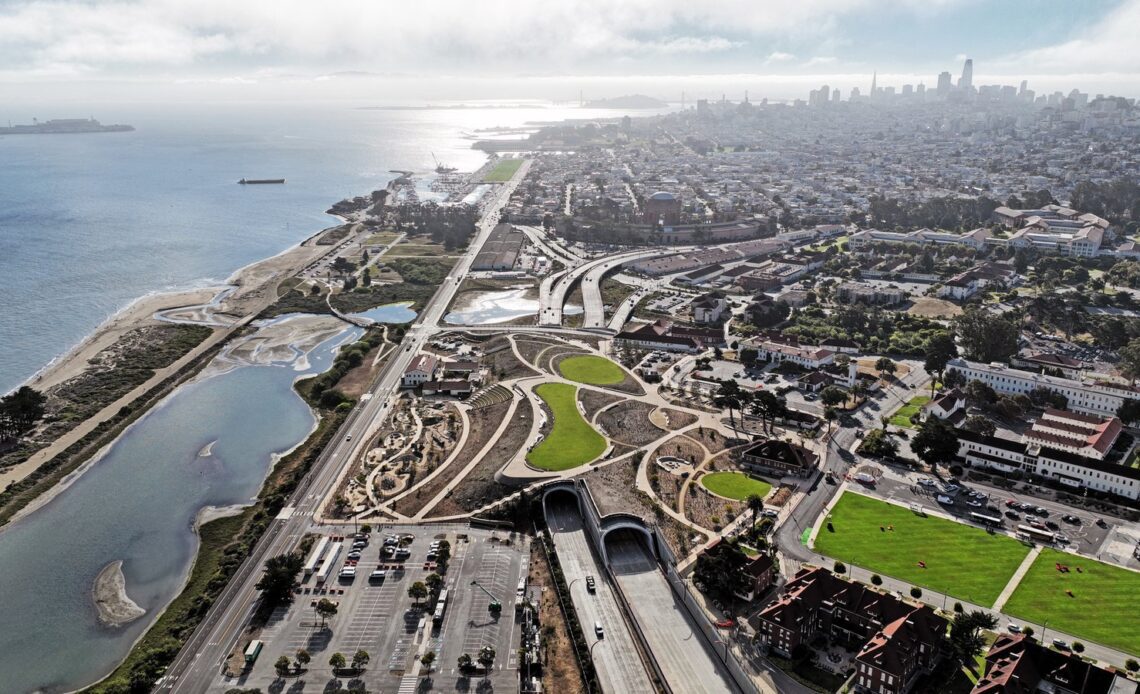On October 17, 1989, the 6.9 magnitude Loma Prieta earthquake shook the city of San Francisco, wreaking havoc on its streets. This included a six-lane, 1.6-mile raised stretch of Highway 101 known as Doyle Drive, which connected the city’s downtown with its Golden Gate Bridge, cutting through what was then the Presidio military base. Following the natural disaster, city officials declared the roadway seismically unsafe.
Doyle Drive’s impending demolition paved the way for planners to replace it with something that was not just structurally sound, but also visually appealing. That’s when local landscape architect Michael Painter came up with an idea: lowering the new roadway into tunnels and creating parkland above them. The open space would be accessible to both bicyclists and pedestrians and put some of the city’s best features—including its neighboring San Francisco Bay—on full display.
Painter died of cancer in 2018 at the age of 83, but his dream came to fruition this past Sunday, with the opening of Presidio Tunnel Tops, a 14-acre park above two highway tunnels, replacing Doyle Drive, which opened to traffic in 2018. The park is part of the larger Golden Gate National Recreation Area, a 114-square mile collection of associated parklands that includes Muir Woods, Alcatraz and the Presidio, which the National Park Service officially took charge of in 1994. It’s also just one of dozens of infrastructure reuse projects that have been popping up across North America—from Toronto to Mexico City—in the last decade, transforming under-utilized railway trenches and waterfronts into greenways, parks and cultural destinations.
“Infrastructure reuse offers a unique opportunity to face the discriminatory patterns of investment that have shaped our American cities today,” says Asima Jansveld, managing director of the High Line Network, a peer-to-peer group of infrastructure reuse projects and the people who are helping bring them to life. The network includes sites that are already up and running, such as New York City’s hugely successful High Line, a 1.45-mile-long elevated linear park, greenway and rail trail with sections opening from…
Click Here to Read the Full Original Article at Travel | smithsonianmag.com…
